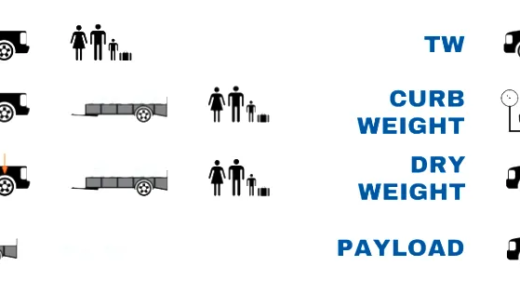Spider silk is a remarkable material known for its strength and versatility. This article explores its composition, production, strength, communication, applications in technology, durability, and environmental impacts. Spider silk serves not only as a tool for hunting but also as a medium for communication among spiders, while its unique properties lead to innovative uses in various industries. Additionally, the durability of spider webs is influenced by environmental factors, showcasing the adaptability of these fascinating creatures.
What is Spider Silk Made Of: Exploring the Components
Spider silk is an extraordinary material known for its remarkable strength and versatility. It is primarily composed of proteins, specifically fibroins, which are produced by spiders. These proteins are organized in a way that allows spider silk to possess unique mechanical properties. The main components of spider silk include:
- Fibroin: The structural protein that forms the bulk of spider silk.
- Sericin: A protein that coats fibroin and helps to bind the strands together.
- Amino acids: Building blocks of proteins, including glycine and alanine, contribute to the silk’s elasticity and strength.
Understanding the composition of spider silk sheds light on its potential applications in various fields such as medicine, textiles, and engineering.
How Do Spiders Produce Silk: The Silk-Making Process
Spiders produce silk through specialized glands known as spinnerets. The process begins when a spider secretes a liquid protein solution from these glands. As the liquid silk travels through the spinnerets, it undergoes a transformation into solid silk fibers. The key steps in this silk-making process include:
- Secretion: Liquid silk proteins are secreted from the spinneret glands.
- Concentration: The silk proteins are concentrated as they move through the ducts.
- Spinning: The spider draws the silk out, causing it to solidify and form a thread.
This intricate process allows spiders to create silk in various forms, which can be used for web building, wrapping prey, and even creating draglines for safety.
Why is Spider Silk Stronger Than Steel: The Science Behind Its Strength
Spider silk is often touted as stronger than steel, and this strength can be attributed to its unique molecular structure. The strength of spider silk comes from its:
- Protein Structure: The fibroin proteins form long chains that create a strong and flexible matrix.
- Hydrogen Bonds: These bonds between the protein chains provide additional stability and strength.
- Elongation: Spider silk can stretch significantly without breaking, allowing it to absorb energy.
This combination of features not only makes spider silk incredibly strong but also lightweight and elastic, making it a fascinating subject for scientific research and potential technological innovations.
Types of Spider Webs: A Look at Different Designs
Spider silk serves as the foundation for a variety of web designs, each tailored for specific functions. Understanding these types of spider webs reveals how spiders maximize their hunting efficiency and adapt to their environments. Here are some common web types:
- Orb webs: Characterized by their circular shape, orb webs are constructed by garden spiders. These webs are efficient for trapping flying insects.
- Sheet webs: Flat and horizontal, sheet webs are often found in tall grass. They capture insects that land on the surface.
- Tangle webs: Also known as cobwebs, these webs are messy and irregular. They ensnare insects by chance rather than through a specific design.
- Funnel webs: Shaped like a funnel, these webs have a retreat where the spider hides. They are effective for ambushing prey that wanders too close.
- Triangle webs: These webs are triangular and used by certain species to catch flying insects with minimal effort.
Each web type showcases the incredible adaptability of spiders, allowing them to thrive in various environments while employing different strategies for capturing prey.
Catching Prey: How Spiders Use Their Webs for Hunting
Spider webs are not just beautiful structures; they are essential hunting tools. Spiders use their webs in various ways to effectively catch prey. The functionality of these webs can be broken down into several methods:
- Trapping: The sticky silk on many webs ensnares insects that come into contact with it. This passive method allows spiders to catch prey without expending much energy.
- Ambushing: Some spiders wait in their webs, ready to pounce on unsuspecting insects that wander too close.
- Wrapping: Once prey is caught, spiders often wrap it in silk to immobilize it, making it easier to consume.
- Rebuilding: After capturing prey, many spiders will consume parts of their web and recycle the silk to create new traps, ensuring efficiency.
This strategic use of webs highlights the resourcefulness of spiders, demonstrating their ability to adapt their hunting techniques to maximize their success.
Can Spider Silk Stretch Without Breaking: Examining Flexibility
Spider silk is renowned for its remarkable elasticity, allowing it to stretch significantly without breaking. This property is crucial for its various applications in nature. The flexibility of spider silk can be attributed to:
- Protein Structure: The unique arrangement of proteins in spider silk permits stretching while maintaining integrity.
- Hydrogen Bonds: These bonds between the protein chains enable the silk to expand and contract, absorbing energy from impacts.
- Limitations: While spider silk can stretch up to five times its original length, excessive force can lead to breakage. This balance between strength and elasticity is what makes spider silk extraordinary.
The ability of spider silk to stretch without breaking is not only vital for the spider’s survival but also inspires innovations in materials science and engineering, where flexibility and strength are desired qualities.
Spider Silk and Communication: How Spiders Talk Through Webs
Spider silk is not just a tool for capturing prey; it also serves as a medium for communication among spiders. Through vibrations and signals transmitted via the silk, spiders can convey important information about their presence and intentions. This communication can include:
- Warning Signals: When a spider feels threatened, it can send vibrations through its web to alert others nearby.
- Mate Attraction: Male spiders often use silk to create specific vibrations that attract female spiders during mating season.
- Territorial Marking: Some spiders leave behind silk threads that signal their territory to other spiders, helping to avoid conflicts.
This intricate form of communication highlights the complex social behaviors of spiders, showcasing their reliance on silk for survival and reproduction.
Practical Applications of Spider Silk in Technology: Beyond Nature
Spider silk’s remarkable properties have captured the attention of scientists and engineers alike, leading to various applications in technology. Its strength and flexibility make it an ideal candidate for several innovative uses, including:
- Medical Sutures: Researchers are exploring the use of spider silk in biodegradable sutures that promote healing without the complications associated with synthetic materials.
- Textiles: Companies are developing fabrics made from synthetic spider silk, offering lightweight yet durable clothing options.
- Biodegradable Fishing Lines: Spider silk can potentially replace conventional fishing lines, reducing plastic waste in oceans.
- Ropes and Cables: The strength of spider silk makes it suitable for creating ropes that are lighter and stronger than traditional materials.
These applications demonstrate the potential of spider silk to revolutionize various industries, promoting sustainability and efficiency.
Durability of Spider Webs: What Makes Them Last
The durability of spider webs is a fascinating aspect of their design. Various factors contribute to the longevity of these intricate structures, including:
- Material Composition: The proteins in spider silk are resistant to degradation, allowing webs to withstand environmental stresses.
- Web Structure: The design of the web itself provides strength and stability, enabling it to endure wind and rain.
- Maintenance: Spiders regularly repair and rebuild their webs, ensuring they remain functional and effective over time.
This combination of biological and environmental factors results in webs that can last for extended periods, showcasing the evolutionary adaptations of spiders.
Environmental Factors Affecting Spider Webs: The Impact of Nature
Spider webs are highly influenced by environmental conditions, which can affect their strength and structure. Key factors include:
- Humidity: Higher humidity levels can enhance the silk’s elasticity, making webs more resilient.
- Temperature: Extreme temperatures can weaken silk, causing it to become brittle or overly soft.
- Wind and Rain: Strong winds and heavy rain can damage webs, prompting spiders to rebuild or relocate.
Understanding these environmental influences is crucial for studying spider behavior and the resilience of their webs in changing habitats.





Comments are closed.